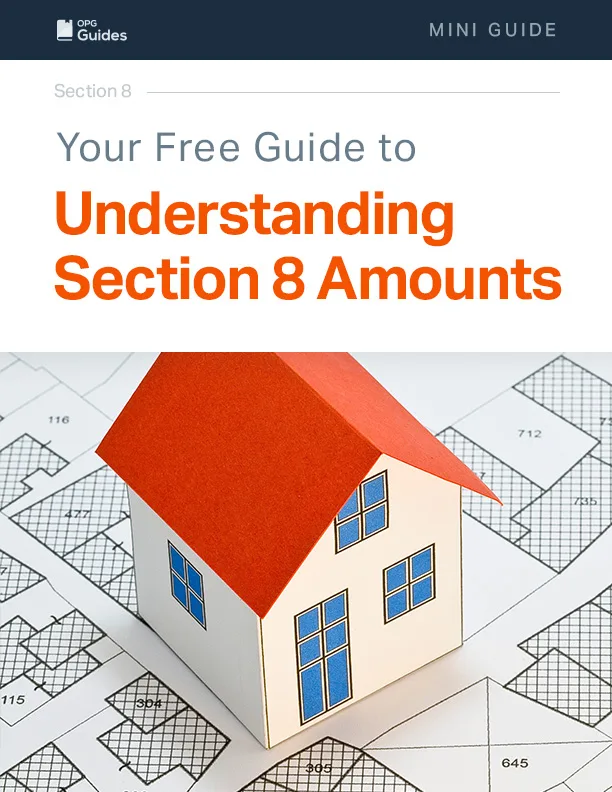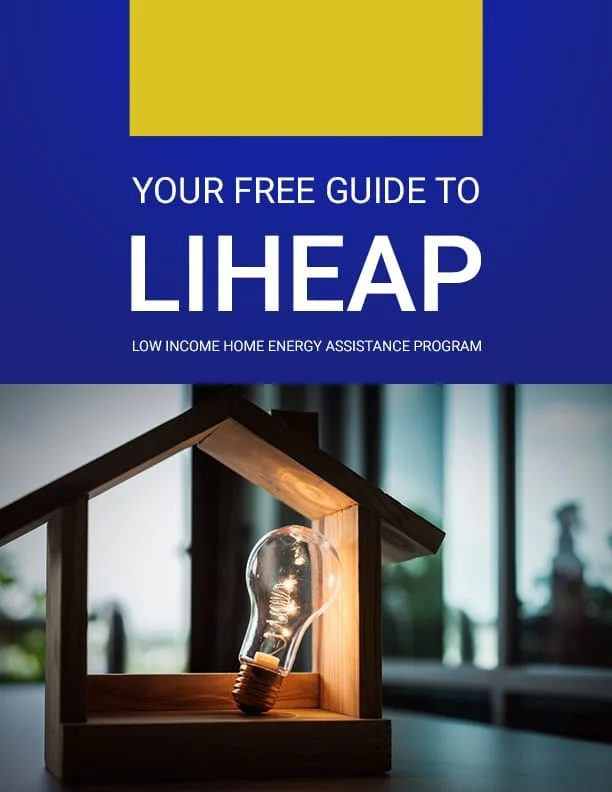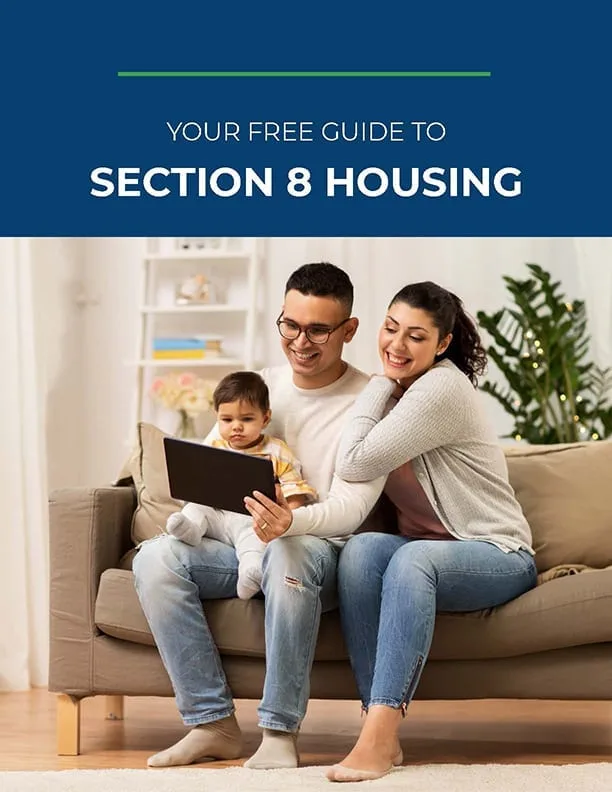Your Free Guide to Maximizing Monthly Benefits: Tips For Section 8 Recipients
Your Free Guide to Maximizing Monthly Benefits: Tips For Section 8 Recipients
We are privately owned and not affiliated with the government in any way or form.

Introduction to the Section 8 Housing Program
Navigating the complexities of housing expenses can be challenging, especially for those with limited financial resources. The Section 8 housing assistance program, also known as the Housing Choice Voucher Program, was established to alleviate this burden by providing qualifying individuals and families with rental subsidies.
Administered by local Public Housing Agencies (PHAs) and funded by the U.S. Department of Housing and Urban Development (HUD), this program offers a lifeline to affordable housing. In this guide, we’ll delve into the various strategies you can employ to maximize Section 8 benefits and learn how to secure a stable and comfortable living environment.
Understanding Section 8 Vouchers and Renting
The foundation of the Section 8 program lies in the housing voucher, which serves as a bridge between the actual rent and what you can reasonably afford. To make the most of these benefits, it’s essential to understand the intricacies of renting under this program:
- Budgeting Wisely: Before beginning your housing search, take a close look at your monthly income and expenses. Create a comprehensive budget that factors in essential costs like utilities, transportation, and groceries. This can give you a clear picture of the funds available for rent.
- Choosing Affordable Housing: While the program offers some flexibility in selecting a rental unit, it’s wise to search within the program’s “fair market rent” (FMR) limits. PHAs provide FMR guidelines for different regions and bedroom sizes, helping you target rentals that align with your voucher amount.
- Negotiating Rent: Don’t shy away from negotiating rent with potential landlords. While they might not lower the rent significantly, even a slight reduction could make a difference in your monthly expenses and maximize your benefits.
- Roommate Consideration: In certain instances, having a roommate can help distribute the costs and potentially allow you to afford a more spacious or better-located rental. However, always ensure that the PHA approves such arrangements and that the total rent remains within the FMR limits.
Using Your Housing Choice Voucher

Now, you may be asking yourself, “I’ve been approved for a housing choice voucher, where can I use it?” Most PHAs provide informational packets with details about the terms of the voucher (how long it is valid), the amount of rent assistance, information about where to find housing, and an explanation of obligations under the program.
To see what a housing voucher looks like, click the following link or input the URL into your browser’s address bar: https://www.hud.gov/sites/dfiles/OCHCO/documents/52646.PDF
How much rent do tenants pay?
If you receive a voucher, that doesn’t mean you get 100% free housing. The goal of the program is to help qualified individuals and families work toward financial independence by providing temporary assistance, so it’s not meant to completely pay the monthly rent.
A family’s expected contribution depends on the family’s income and fair market rental rates in the area.
To calculate how much rent a Section 8 beneficiary would pay, HUD uses one of the following formulas (whichever is greater):
- 30 percent of monthly adjusted income: This is gross income (before taxes) minus deductions for dependents, child care and disability assistance. Elderly or disabled families can also claim an elderly deduction and a medical expenses deduction.
- 10 percent of gross monthly income: This is income before taxes and deductions.
- The welfare rent in as-paid localities: The “welfare rent” only applies to families who are on welfare (such as the Temporary Assistance for Needy Families (TANF) program) in places where the welfare office designates a certain amount of cash assistance for rent. Not all welfare offices do this, so this does not apply to everyone.
- The PHA’s minimum rent: This varies by PHA, but is usually between $25 and $50. A PHA will only impose a minimum monthly rent if each of the previous three formulas equals less than $25.
How to Find HUD’s Fair Market Rental Rates for an Area
To check an area’s fair market rental rate, follow these steps:
- Visit the HUD webpage for fair market rent here:
https://www.huduser.gov/portal/datasets/fmr.html#year2025
- Click the button that says, “Click Here for FY 2025 FMRs.”
- Select your state from the list. A county list will appear to the right.
- Click the county whose income limits you want to check.
- Finally, click “Next Screen” to see the fair market rents for the area.
Your results will show the fair market rents for units up to four bedrooms.
Where can you use a Section 8 voucher?
To make the most of your monthly benefits, it’s important to know where the voucher applies. You can use your voucher in any type of housing on the open market, including apartments, townhomes, single-family homes, and more.
However, you cannot use a Section 8 voucher in:
- A nursing home, care home or any other facility providing psychiatric, nursing or medical care.
- A unit occupied by its owner.
- College dormitories.
- Prison or reformatory units.
- Public housing units.
- Any other unit already receiving a federal subsidy, such as project-based assistance.
Where to Search for Section 8 Rental Units
There are many ways to find Section 8-approved rental units. Looking online is often a convenient way to find a unit. Resources to consider trying are described below.
- HUD’s Resource Locator tool:
- Click on the following link or input the URL into your browser’s address bar: https://resources.hud.gov/
- Allow location access.
- Click “Find Affordable Housing Opportunities Near Me.”
- Next, enter a city or address in the search bar.
- A local map will appear with multiple icons on it. Click on an icon to learn about the housing unit.
- U.S. Department of Agriculture (USDA) listings:
- Click on the following link or input the URL into your browser’s address bar: https://rdmfhrentals.sc.egov.usda.gov/RDMFHRentals/select_state.jsp
- Click on a state on the map.
- Next, click a county.
- Finally, click on the name of a rental property from the list.
- PHA listings. A PHA may provide you with:
- Links to apartment searching websites that the PHA endorses.
- A list of landlords who have rented to Section 8 participants in the past.
- Flyers from local landlords.
Many PHAs partner with a third-party website to advertise rental listings. For example, affordablehousing.com is a common resource for PHAs to partner with.
Where else can you look for Section 8 rental units?
Since a housing choice voucher gives you the freedom to choose any rental unit that participates in the Section 8 program, you are not limited to using the above resources. You may also search for Section 8 rental units in the following places:
- Any mainstream apartment searching website, such as Zillow, Apartment Finder or Apartments.com.
- Newspaper advertisements.
- Online classifieds.
- For-rent signs in the neighborhood.
Keep in mind that you do not need to limit your search to housing advertised to low-income renters. In fact, you can choose any unit you want as long as it meets the requirements.
How long is a housing choice voucher valid?

Upon your successful enrollment in the program, it becomes paramount to start your search for suitable housing as soon as possible. By legal mandate, Public Housing Authorities (PHAs) stipulate a minimum of 60 days within which you should secure a rental home.
Nevertheless, certain PHAs might establish more generous timelines. Should you not find a residence before the deadline, regrettably, your voucher could lapse, rendering it null and void.
In situations where you encounter challenges locating a rental, you have the potential to petition for an extension from the housing authority. In most instances, an extension of at least 90 days could be granted, though certain PHAs might be open to extending this period even further. For example, Miami-Dade county augments its initial 60-day term with an additional 60-day extension, culminating in a total voucher duration of 120 days.
The protocol for requesting an extension varies depending on the specific PHA. Your designated PHA should give you the necessary information on how to initiate the extension process upon your acceptance into the Section 8 program.
Furthermore, it’s worth noting that PHAs establish their own distinctive criteria for determining extension eligibility. In certain cases, extensions might only be granted under extenuating circumstances, such as a family member’s hospitalization or an unforeseen emergency.
What happens when I choose a unit?
Once you find a unit that you want to rent, you will need to contact the landlord. The next steps may include:
- Touring the unit apartment.
- Submitting to a background check or other screening procedures.
- Undergoing an interview with the landlord.
It’s important to keep in mind that the responsibility of tenant screening rests with landlords, not PHAs. While aligning with your PHA’s prerequisites is important, landlords retain the authority to establish their own criteria for tenant approval, provided these criteria remain compliant with federal, state, and local regulations.
Guided by HUD recommendations, it’s wise to consider several housing options prior to reaching a conclusion. Your PHA can give you details about landlords who have previously collaborated with the program in your vicinity. Nonetheless, the task of identifying and opting for a suitable rental unit lies with you.
When you find a unit that suits your preferences and negotiate terms with the landlord, the next step entails notifying the PHA through the submission of a tenancy approval request. The PHA should provide you with a form that you need to complete and sign, alongside the landlord’s signature, before proceeding with the submission.
In addition to the form, you must typically submit a copy of your lease agreement and the tenancy addendum provided by the HUD.
After submitting these documents to the PHA, the PHA will make sure that:
- The unit is eligible for Section 8 vouchers.
- The landlord is acceptable.
- PHAs will not allow you to rent from landlords who have committed fraud, engaged in criminal activity, repeatedly rented units that do not meet housing codes, etc.
- The unit meets HUD housing standards.
- The rent is reasonable.
Once all of these requirements are met, the PHA will execute a Housing Assistance Payment (HAP) contract with the landlord. You will then start receiving rent assistance.
Once the lease begins, the PHA will send a portion of the rent payment directly to the landlord whenever it is due. You will be responsible for paying the remaining amount of rent directly to your landlord.
Investing and Section 8
As you work toward financial stability, you may consider investments as a means to build wealth over time. While investments can be beneficial, they can also impact your eligibility for Section 8 benefits:
- Income Reporting: It’s crucial to accurately report any investment income to your PHA. Income generated from investments, such as dividends or rental properties, could influence your eligibility or the amount of assistance you receive.
- Asset Limits: Keep in mind that Section 8 has specific asset limits that vary depending on your PHA. Different types of assets, such as retirement accounts or cash savings, may be treated differently in terms of eligibility calculations.
- Consultation: Before making significant investment decisions, consider consulting with your PHA. They can provide insights into how specific investments may affect your Section 8 benefits, helping you make informed choices for your financial future.
Navigating Maximum Assistance Amounts
The assistance amount you receive through the Section 8 program is determined by a variety of factors, including your income, family size, and local housing market conditions. To ensure you’re maximizing your benefits:
- Report Income Changes: Any shifts in your income or family composition should be promptly reported to your PHA. This proactive approach guarantees that your assistance amount accurately reflects your current circumstances.
- Recertification: PHAs often require periodic recertification to verify your ongoing eligibility. Timely submission of all necessary documents ensures that you continue to receive the maximum benefit.
- Understand Payment Standards: Your PHA sets payment standards that dictate the portion of your rent covered by the voucher. If your chosen rental’s cost exceeds the payment standard, you’ll be responsible for covering the difference.
Rights and Responsibilities of Section 8 Recipients

Empowering yourself with knowledge about your rights and responsibilities is essential for optimizing your Section 8 experience:
- Housing Quality: Your landlord is obligated to provide housing that meets HUD’s Housing Quality Standards (HQS). Familiarize yourself with these standards to ensure your living conditions are safe and comfortable.
- HUD’s HQS serve as a set of guidelines designed to ensure that rental properties meet basic health, safety, and habitability standards. These standards are in place to safeguard the well-being of Section 8 recipients and guarantee that the housing they occupy is of a suitable quality. The HQS cover various aspects of the rental property, including:
- Sanitary Conditions: The property must be free from hazards that could negatively impact health, such as mold, lead-based paint hazards, and pest infestations. Proper sanitation facilities, including bathrooms and kitchens, should be provided and maintained.
- Structural Integrity: The property’s structure must be sound and safe. This includes ensuring that the roof, walls, floors, and ceilings are intact and secure.
- Mechanical Systems: Plumbing, electrical, heating, and cooling systems must be functional and in good repair. These systems play a crucial role in maintaining a comfortable and safe living environment.
- Safety Measures: The property should have functioning smoke detectors, carbon monoxide detectors (if applicable), and other safety features. Adequate exits and fire safety measures must be in place.
- Space and Accessibility: The rental unit must offer adequate space for the number of occupants and should be accessible to individuals with disabilities, as required by the Fair Housing Act.
- Water and Heating: The property must have a consistent supply of hot and cold water, and heating systems must work effectively, providing appropriate temperatures for comfort.
- Ventilation and Air Quality: Proper ventilation is crucial to maintaining indoor air quality. The property should have windows that open, and ventilation systems should be functioning properly.
It’s important to note that while HQS ensures basic living conditions, it doesn’t cover cosmetic issues or minor inconveniences. Additionally, landlords are responsible for addressing any deficiencies that arise during the course of tenancy to maintain compliance with HQS.
- Lease Agreements: Review lease terms carefully, ensuring they comply with program guidelines and state laws. If you have questions or concerns, don’t hesitate to seek clarification before signing.
- Portability: In some situations, you may need to relocate. Understanding the portability process can help you explore housing opportunities in different areas while retaining your benefits.
Conclusion
Navigating the world of Section 8 housing assistance requires a thorough understanding of the program’s nuances and your role within it. By budgeting wisely, making informed investment decisions, and staying vigilant about changes in your circumstances, you can optimize your benefits to secure safe and affordable housing.
Remember, effective communication with your PHA and a commitment to upholding your rights and responsibilities are crucial for a successful Section 8 experience. As you embark on this journey, armed with the knowledge from this guide, you can be better equipped to make the most of your Section 8 housing assistance benefits.






